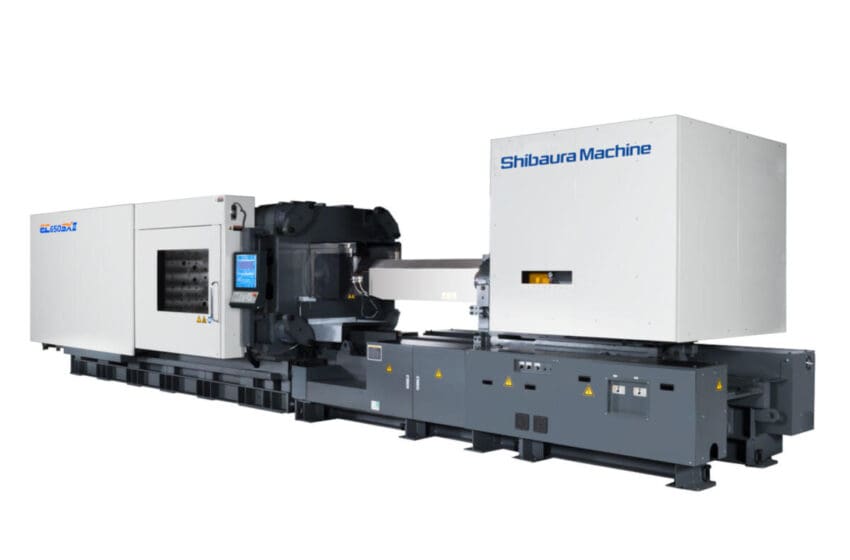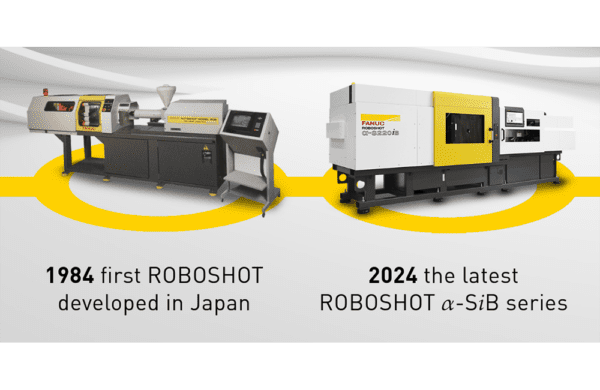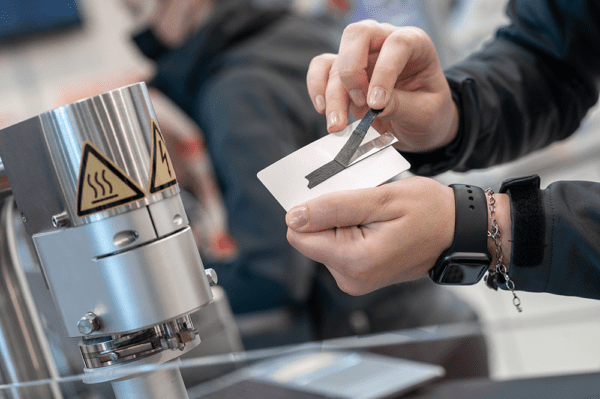
More Sustainable Injection Moulding – All-Electric Moulding Machines from Shibaura Machine
|
Getting your Trinity Audio player ready...
|
According to the Journal of Clean Production, injection moulding may be responsible for up to 90 per cent of the Global Warming Potential (GWP) created by the entire mould lifecycle, mainly caused by energy consumption. Here, Dervish Ibrahim, international sales manager at TM Robotics, explains why all-electric injection moulding machines are the way forward for reducing the process’s environmental impact — while also helping manufacturers achieve a lower cost-per-part.
The Journal of Clean Production’s findings are wake-up call to manufacturers, particularly as demand for injection moulding processes continues to grow. For example, the market for injection moulded medical devices plastics is expected to see booming growth between 2023 and 2030.
Injection moulding is used to manufacture a huge variety of parts, and has several advantages. They include the ability to mould a wide variety of plastics, good repeatability, consistently high production with low waste and a low-cost-per-part — the latter is always a priority.
Maintaining a low cost-per-part throughout the manufacturing process is vital for reducing costs and delivering a higher product value — from both the manufacturer’s and the customer’s perspective. While injection moulding can support this, manufacturers are also concerned about the energy costs of injection moulding, and how this affects sustainability and the bottom line.
More than 90 per cent of the costs of injection moulding can be attributed to energy use. This mainly applies to the electricity used to power and operate the injection moulding machine. As a result, there has been some debate in the industry about the cost and sustainability advantages of hydraulic injection moulding versus all-electric machines.
Injection moulding machines powered by a hydraulic motor can produce higher energy levels and higher injection pressures, and the initial cost of the machine is lower. But there are also disadvantages with hydraulic machines. They include the machine’s high consumption of electric energy because its hydraulic power is connected to an electric power unit that works at maximum capacity during every phase of the moulding process.
Whole-life cost
Although hydraulic injection moulding machines are less expensive initially, it’s important to consider the whole life cost when buying new machines. This was demonstrated by TM Robotics’ customer Lotan, a manufacturer of plastic containers based in Leicestershire, UK. All of the injection moulding machines in Lotan’s production facility are electric, rather than hydraulic.
The company relies on Shibaura Machine’s all-electric injection moulding machines (IMM) supplied by TM Robotics. The machine is manufactured in-house by Shibaura Machine, formerly known as Toshiba Machine. Performance benefits of the IMM include a range of clamping force from 50 to 2,500 tons, which can be calibrated by a digital direct screw transfer (DST) control for added production flexibility.
Although all-electric machines are initially more expensive with lower injection pressures, they are shown to outperform hydraulic versions in a variety of other ways. Advantages include higher rates and speeds of injection because the all-electric machining relies on toggle clamping rather than direct pressure clamping, which is better for high-speed injection moulding.
Further advantages include improved dry cycle times and the overall stability of the mould itself. Thanks to these benefits, Lotan has ordered several more Shibaura Machine IMMs from TM Robotics, specifically its newest SXIII range of injection moulding machines. The SXIII is an enhanced performance model that provides significantly faster injection speeds than traditional moulding equipment. As a result, the machine offers a 35 per cent faster cycle time than conventional hydraulic servo IMMs. Lotan also achieved a lower cost-per-mould.
The bottom line
Aside from performance advantages, injection moulding machines must also be easy to use. This guarantees Lotan’s team can stay on track to meet their key performance indicators (KPIs) by controlling the equipment and keeping it running sustainably. That’s why SXIII range of injection moulding machines are equipped with Shibaura Machine’s user-friendly controller that connects to Lotan’s programmable logic controller (PLC) for simple, repeatable operations.
All-electric moulding machines also have the edge when it comes to maintenance. With PLC controllability, injection moulding operations can be tied into the production facilities’ Internet of Things (IoT) things systems. Data on the IMM’s performance can be collected through sensors and relaid to the plant’s enterprise resource planning (ERP) or manufacturing execution systems (MES) to support preventive maintenance, traceability and quality management.
But, what about the energy efficiency of all-electric versions of hydraulically-powered machines? By using Shibaura Machine’s all-electric IMMs, Lotan has experienced 20 to 40 per cent lower running costs compared with older-fashioned hydraulic machines. Traditional hydraulic injection moulding machines are also less efficient because they consume energy even while idle, whereas all-electric injecting machines only use energy while in action.
Indeed, Shibaura Machine’s all-electric IMMs have been found to yield energy savings of 60 per cent compared with European hydraulic servo IMMs. Other performance tests by Shibaura Machine measured its EC650SX-61B IMM, with a clamping force of 650 tons, against a hydraulic servo machine. It delivered a 51 per cent energy reduction.
In another instance, another EC-SX model, the 1,800-ton EC1800SX-155B, was tested against a competing all-electric IMM. Although both machines had the same energy consumption, the Shibaura Machine IMM delivered a faster cycle time, which gave overall energy efficiency savings of 30 per cent.
Injection moulding might presently be responsible for up to 90 per cent of the processes GWP. However, the performance of all-electric IMMs like Shibaura Machine’s SXIII and EC-SX show this trend can be reversed, with positive effects on sustainability and also the manufacturers’ bottom line.
To learn more about Shibaura Machine’s robots for injection moulding, visit its website.
TM Robotics
01707 290370
Website
Email
Read more from our other machinery supplier partners here.






